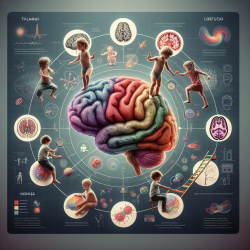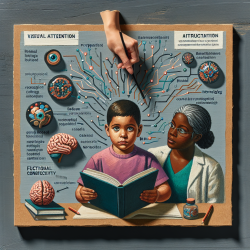Understanding the Role of Thalamocortical Connections in Child Development
As practitioners in the field of speech-language pathology, we are constantly seeking ways to enhance the outcomes for the children we work with. Recent research on the development of thalamocortical connections offers groundbreaking insights that can significantly impact our approach to therapy. This blog post delves into the findings from the research article titled "A Sensorimotor-Association Axis of Thalamocortical Connection Development" and explores how these insights can be applied in practice.
The Science Behind Thalamocortical Connections
The thalamus, a central hub in the brain, plays a pivotal role in coordinating the development of cortical regions along the sensorimotor-association (S-A) axis. This axis represents a gradient from primary sensory and motor areas to higher-order association areas involved in complex cognitive functions. The study reveals that thalamocortical connections develop along this axis, with associative cortical regions maturing later than sensorimotor regions.
This maturation process is not only intrinsic but also sensitive to environmental influences. The research highlights that connections to associative regions exhibit prolonged plasticity and heightened environmental sensitivity, which are crucial for adapting to external stimuli and experiences.
Implications for Speech-Language Pathology
Understanding the maturation of thalamocortical connections provides valuable insights into the neurodevelopmental processes that underpin speech and language acquisition. Here are some ways practitioners can leverage these findings:
- Tailored Interventions: By recognizing that associative regions mature later and are more plastic, therapists can design interventions that align with these developmental windows, optimizing therapy outcomes.
- Environmental Enrichment: Given the sensitivity of thalamocortical connections to environmental factors, creating enriched learning environments can enhance neuroplasticity and facilitate language development.
- Data-Driven Approaches: Utilizing neuroimaging data to monitor the development of thalamocortical connections can inform personalized therapy plans that cater to the unique developmental trajectory of each child.
Encouraging Further Research
While the current study provides a foundational understanding of thalamocortical development, further research is needed to explore its implications across different populations and developmental disorders. Practitioners are encouraged to engage with ongoing research and contribute to the growing body of knowledge in this area.
To read the original research paper, please follow this link: A Sensorimotor-Association Axis of Thalamocortical Connection Development.
Conclusion
The insights from the study of thalamocortical connections offer a new lens through which we can understand and enhance child development. By integrating these findings into practice, speech-language pathologists can make data-driven decisions that lead to better outcomes for the children they serve. As we continue to learn more about the brain's development, the potential for improving therapeutic interventions only grows.










